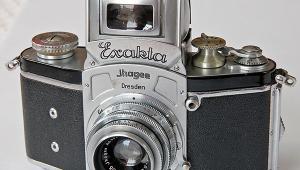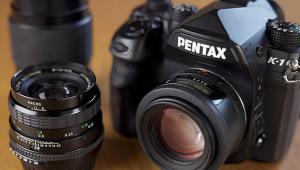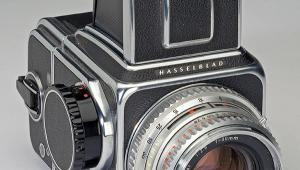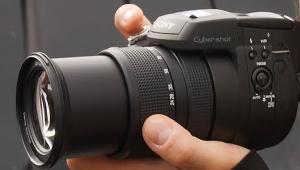The Savvy Consumer’s Guide To Pre-Owned, Collectible, And Vintage Cameras; Gather Ye Nikons While Ye May: Best Bets In Nikon Film SLRs
While I am hardly a charter member of the anti-digitist (I shoot about 70 percent digital these days, mostly with a Canon EOS 20D, and I'm currently nursing a bad case of 5D lust) I will confess to being a long-time Nikon nut. When I acquired my first Nikon F in the early 1960s, I thought I had died and gone to heaven, and there are at least half a dozen Nikon cameras on my "world's greatest" list. I therefore had a lump in my throat and maybe a wee bit of mist in my eye when I read Nikon's mid-January press release that it was ceasing production and sale of all film cameras save for the flagship F6 and the pleasantly unassuming, entry-level, manual-focus FM10. While I commend Nikon for soldiering on with two 35mm SLRs--long may they wind and click--it surely marks the end of a noble era characterized by remarkable achievements, both in technology and camera design.
Where does this all leave collectors, lovers, and users of Nikon 35mm SLRs? Pretty much in the same boat they were before. It's no secret that the prices of even some of the most esteemed and desirable 35mm models have taken big hits in the wake of the digital dreadnaught, and, overall, 35mm SLR prices have never been lower than they are right now. No, I am not anticipating a sudden stampede by Nikon film SLR fanatics causing prices to skyrocket. However, I believe prices will not erode significantly in the near term, and I do feel that manual-focus Nikon SLRs in particular will continue to hold their present value remarkably well. There are even a few models that will probably go up in value due to increased demand among users and collectors, their relative scarcity, and the fact that they're out of production. In short, if there's a manual-focus Nikon SLR that you've always hankered for, the time to snag a pristine example is now.
Exactly which manual-focus Nikon SLRs am I talking about? Well, all of them, actually, but this month we'll concentrate on some of the best of the enthusiast-aimed models, namely Nikkormats and the highly esteemed Nikon FM series, which includes some of the nicest Nikons ever.
|
Deal Of The Month!
|
||
 |
||
|
The Nikkormat Saga
The Nikkormat that debuted in '65 was Nikon's first serious attempt (after a series of lackluster fixed- and interchangeable-lens Nikkorexes, said to be made by Mamiya) to provide amateur photographers with a durable, high-quality 35mm SLR body with an F-mount that was far less costly than the posh, professional Nikon F. In this, they succeeded admirably, and the hefty, rugged, Spartan, mechanically-based Nikkormats felt like Nikons, sold like hot cakes, and performed well enough to be used by pros as back-up bodies.
 |
|
|
The mechanical models FT ('65), FTN ('67), FT2 ('75), and FT3 ('77) are all solid, rugged, fixed-prism, manual-everything SLRs incorporating vertical metal focal-plane shutters, with speeds of 1-1/1000 sec plus B arrayed on a shutter speed dial situated concentrically behind the lens mount--a signature Nikkormat F feature. The FTN featured center-weighted metering and worked with non-AI (Auto-Indexing) lenses. The FT2 had an ISO-type hot shoe contact and sync terminal with built-in automatic M-X switchover, and the FT3 was basically an AI lens version of the FT2. Although sold under the Nikkormat marquee, the Nikkormat EL ('72), winder-compatible ELW ('76), and EL2 ('77) were all electronically-controlled shutter cameras based on a different chassis. Despite their solidity, none have the visceral appeal of the mechanical models, and the original EL was a known battery eater.
 |
|
|
Prices for used mechanical Nikkormats vary wildly, but models in E (Excellent) condition hold their value. At this writing, Adorama (www.adorama.com) was offering two V-condition bodies at a mere $59 and $79 respectively, whereas B&H (www.bhphotovideo.com) featured a pristine collector's FTN with mint 55mm f/2 Nikkor and case for $479! KEH (www.keh.com) was right in the middle, listing an E black FT body at $165, an E+ one in chrome at $172, an E+ chrome FT2 at $205, and an E+ FT3 in black at $286. The Achilles' heel of mechanical Nikkormats is the variable resistor in the metering circuit, so be sure yours is working 'cause they're nearly impossible to replace. Oh yeah, Nikkormats were called Nikomats in Japan and versions so marked occasionally show up here. It is said that Nikon had to add the "r" to satisfy Zeiss Ikon, who was miffed that "Nikomat" was too close to "Ikomat," a name found on rollfilm classics and mediocre 35mm SLRs.
- Log in or register to post comments

















































